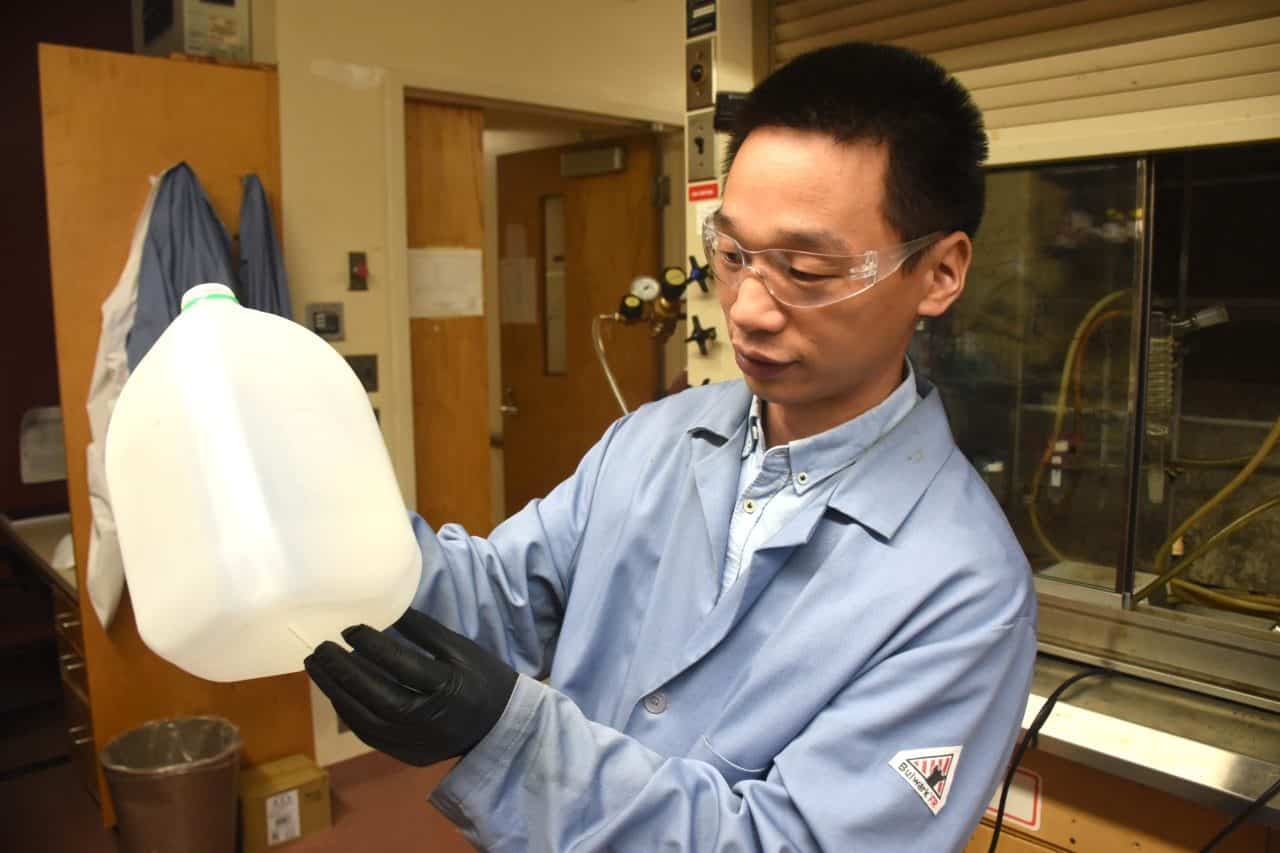It’s probably not the silver bullet that will help us get rid of plastic, but this new method could get rid of at least some of the world’s plastic pollution. A team of US and Chinese researchers created a way to upcycle plastic into high-value chemicals, known as surfactants, which are used to create cleaning products such as soap and detergent.

Plastic pollution is a severe global problem. Between 19 and 23 million tons of plastic waste leak every year into aquatic ecosystems, according to the UN. They can alter habitats and natural processes and reduce the ecosystem’s ability to adapt to climate change — affecting millions of people’s livelihoods and food production capabilities.
Plastics and soap don’t seem to have much in common, but there’s a surprising connection at the molecular level. The chemical structure of polyethylene, a type of plastic, is very similar to that of a fatty acid, used as a chemical precursor to soap. Both materials are made of long carbon chains, but fatty acids have an extra group of atoms.
Guoliang Liu, a professor at the Virginia Tech College of Science, had long felt this similarity meant it should be possible to convert polyethene into fatty acids. The challenge was to break a long polyethene chain into many short ones and to do it efficiently. But Liu found inspiration while enjoying a winter day by a fireplace.
He watched the smoke rise from the fire, reminding him how smoke is made from small particles produced during the wood’s combustion. While plastics shouldn’t be burned in a fireplace for safety and environmental reasons, this made Liu wonder what would happen if polyethene could be burned in a safe laboratory setting.
“If we similarly break down the synthetic polyethylene molecules but stop the process before they break all the way down to small gaseous molecules, then we should obtain short-chain, polyethylene-like molecules,” Liu said in a news release.
Heat and plastics
Working with a team, Liu built a small reactor, similar to an oven, where they could heat polyethene. At the bottom, the oven is at a high enough temperature to break the polymer chains. At the top, it’s cooled to stop any further breakdown. After the heating process was complete, they gathered the residue and found it comprised short-chain polyethene — or wax.
This was the first step to developing a method to upcycle plastics into soap. After adding a few more steps, the researchers made the world’s first soap out of plastics. They then documented and refined the process. “Our research demonstrates a new route for plastic upcycling without using novel catalysts or complex procedures,” Zhen Xu, study author, said in a press release.
While the study focused on polyethene, the method can also work on polypropylene, another type of plastic, the researchers said. It can even be used on both these plastics at once, without having to separate the two from each other. This is a big plus over current recycling methods, which require sorting out the plastics to avoid contamination.
Another benefit is how cost-effective the method is. It mainly requires plastic and heat, aside from some additional ingredients later in the process to convert the wax molecules into fatty acids and soap. For upcycling to be effective on a large scale, the final product must be more economically attractive than other current recycling options.
The study, the researchers said, is a first step towards a new way to reduce waste by challenging plastics into the production of other materials. Over time, they hope that recycling facilities around the world can implement their method. If so, consumers could eventually purchase soap in supermarkets which also reduces plastic waste in landfills.
“It should be realized that plastic pollution is a global challenge rather than a problem of a few mainstream countries. Compared to a sophisticated process and complex catalyst or reagent, a simple process may be more accessible to many other countries worldwide,” Xu said. “I hope this can be a good start for the warfighting plastic pollution.”
The study was published in the journal Science.






